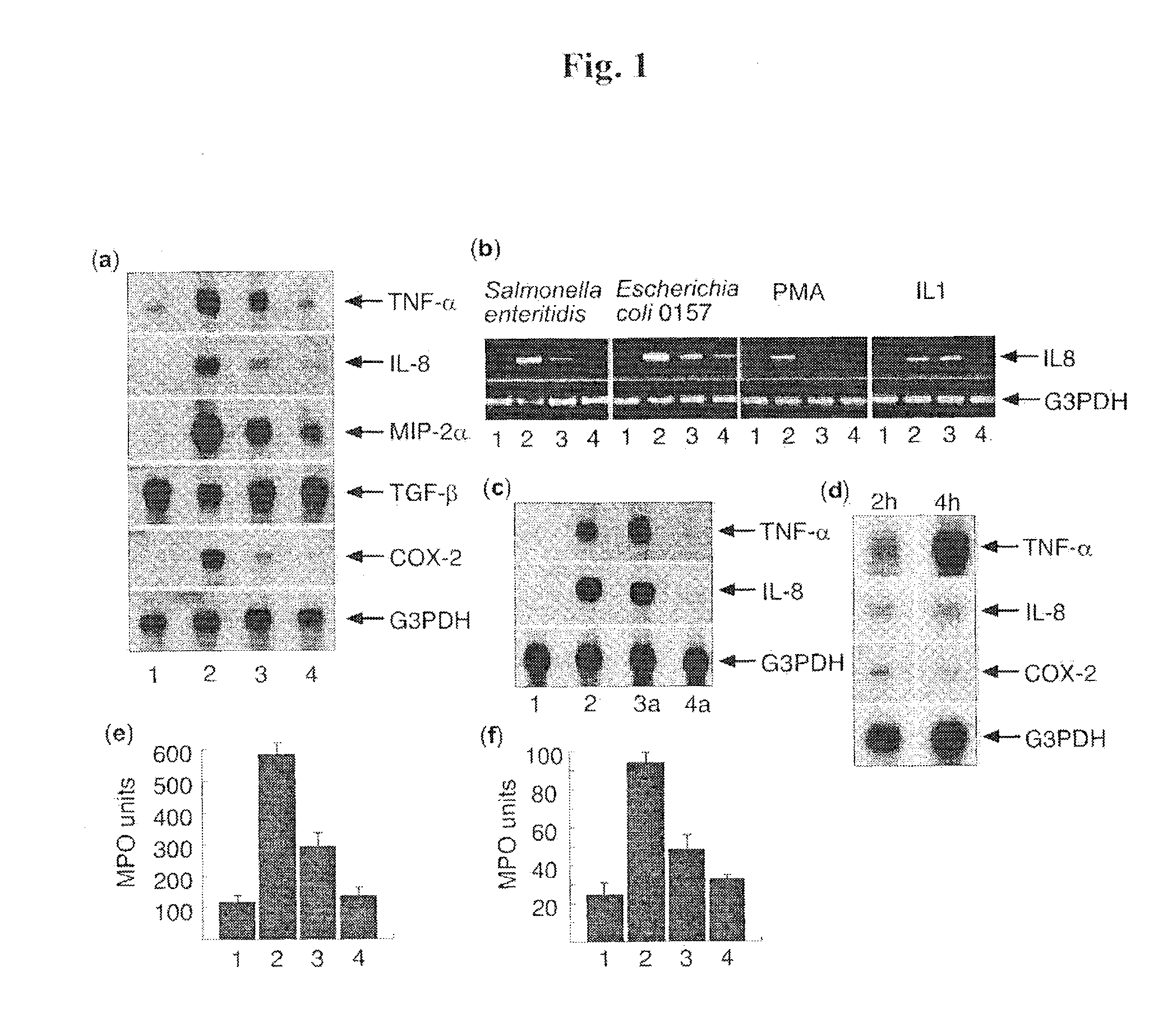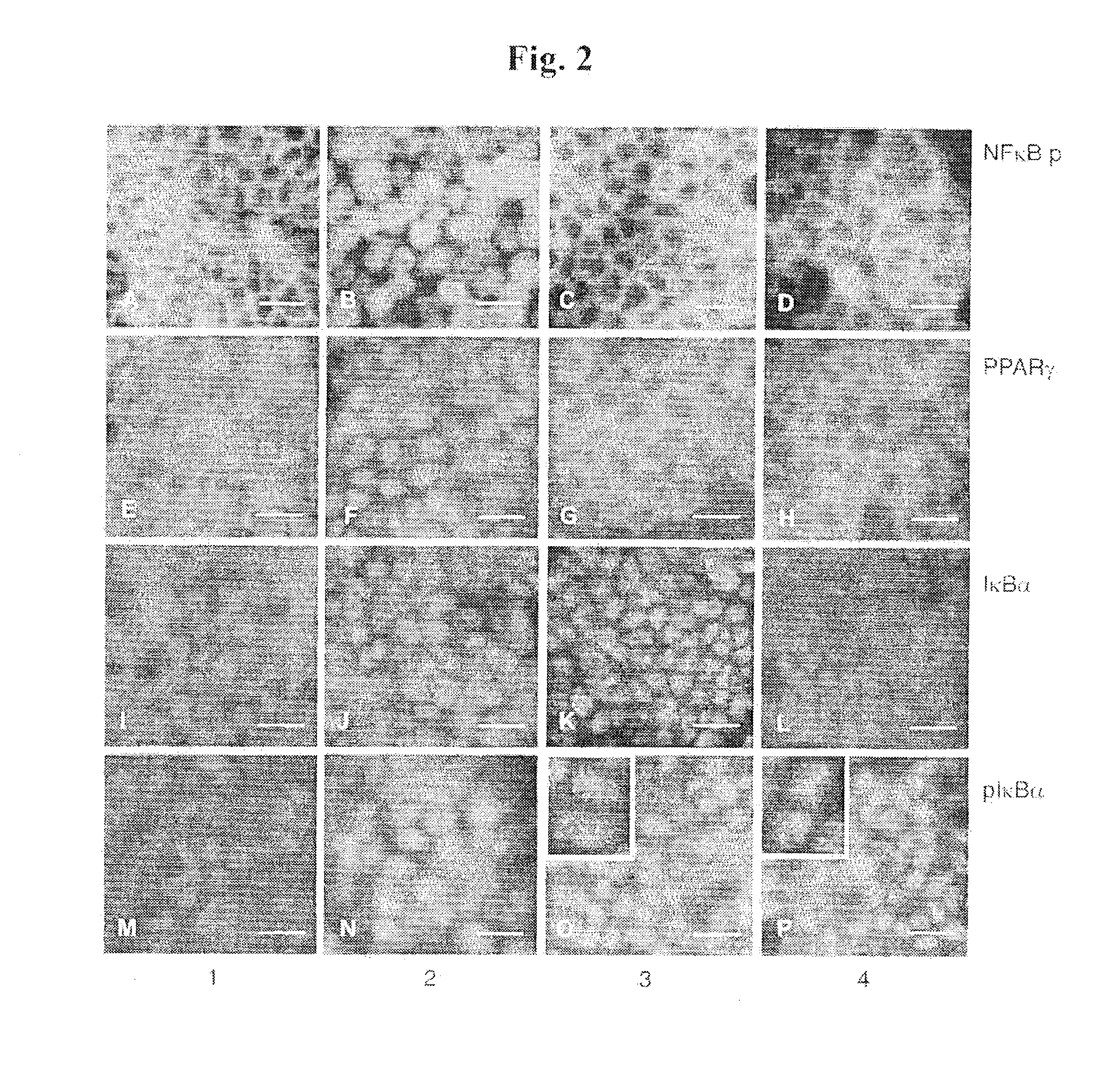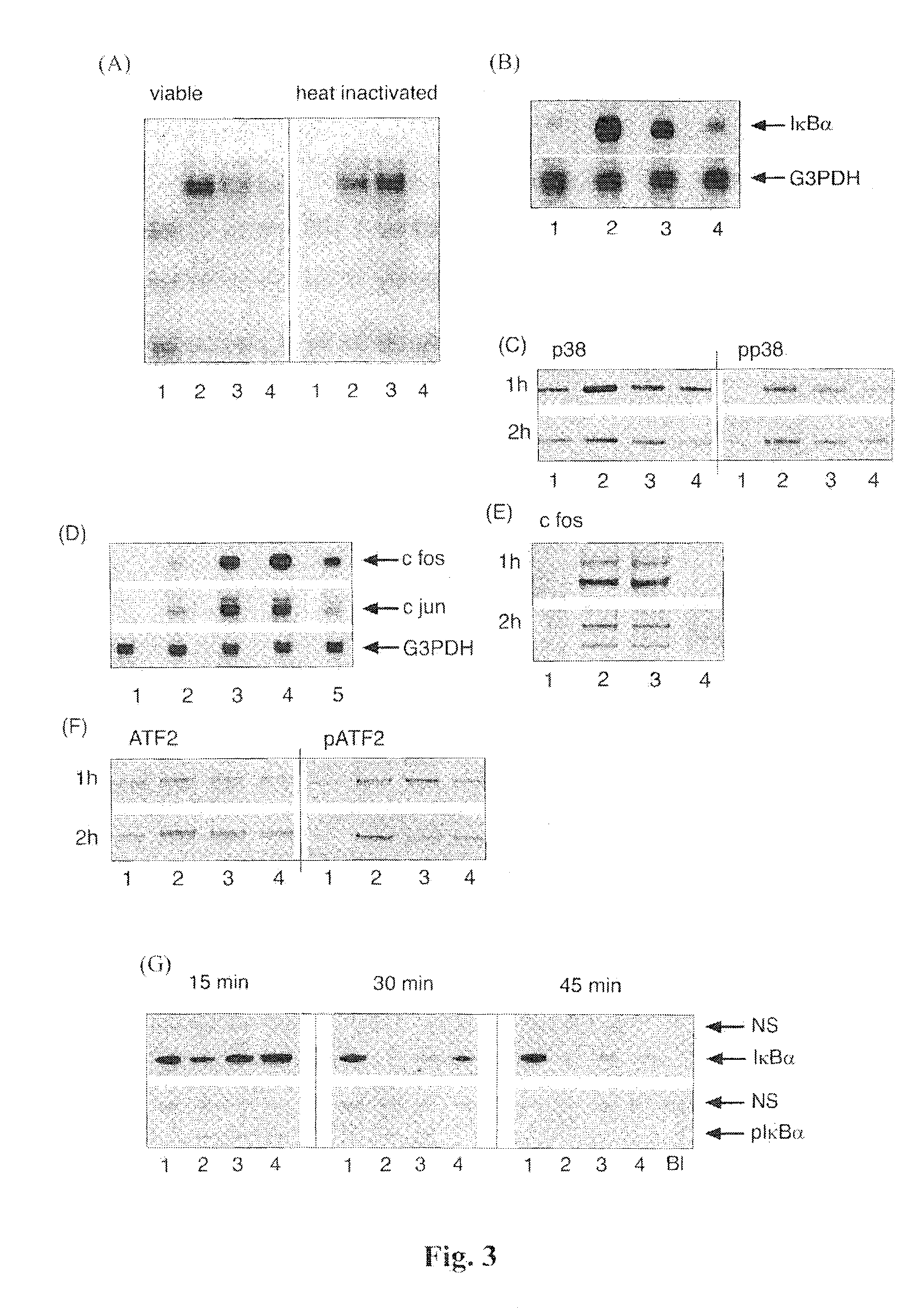Methods for treating an inflammatory disease of the bowel
- Summary
- Abstract
- Description
- Claims
- Application Information
AI Technical Summary
Benefits of technology
Problems solved by technology
Method used
Image
Examples
example 1
Inflammatory Responses of Caco-2 Cells Exposed to S. enteritidis in the Presence and Absence of B. thetaiotaomicron and B. vulgatus.
[0120]The evidence for bacterial regulation of host inflammatory response was derived from studies investigating inflammatory gene expression following short-term exposure of intestinal Caco-2 cells to Salmonella enteritidis co-cultured in the presence and absence of Bacteroides thetaiotaomicron. Using cDNA macro-array technology (CLONTECH Atlas human cytokine / receptor array system) we identified several genes including TNF-α, IL-8, MIP-2α and COX-2, whose induction following S. enteritidis exposure was attenuated by the presence of B. thetaiotaomicron. These results were confirmed using Northern hybridization and real-time PCR (FIG. 1a, f). We also investigated the anti-inflammatory activity of B. thetaiotaomicron against other inflammatory mediators including IL-1α, IL1-β, TNF-α, PMA, LPS and enterohaemorrhagic E. coli 0157 H7 (FIG. 1F). Of those lig...
example 2
B. thetaiotaomicron Attenuates Inflammation by Altering the Cellular Distribution and Activation State of NF-κB and PPARγ Proteins and Involves Targeted Disruption of the NF-κB Signal Transduction Pathway.
[0136]The NF-κB family of transcription factors plays a central role in regulating inflammatory responses.
[0137]These proteins share a highly conserved NH2-terminal sequence referred to as the Rel homology domain, which is required for their subunit dimerisation, DNA binding and interaction with the inhibitory IκB proteins. Signals that induce NF-κB lead to phosphorylation, of the inhibitory IκB proteins (IκBα at Ser-32 and Ser-36) which are then targeted for ubiquitination and proteosome-meditated degradation. Rel proteins, including RelA (p65), are thereby released to translocate to the nucleus and bind DNA.
[0138]Non-infected Caco-2 cells (1) were incubated with 108 S. enteritidis alone (2), 108 S. enteritidis and 109 B. thetaiotaomicron (3), and 109 B. thetaiotaomicron alone (4)...
example 3
B. thetaiotaomicron Induces Nucleocytoplasmic Shuttling of PPARγ and Sequesters RelA
[0148]A recent report of immune-suppression by non-pathogenic bacteria attributed the mechanism to inhibition of both ubiquitination and degradation of 1κBα (Neish et al, 2000), which clearly does not apply to our model system. The predominant cytosolic location of NF-κB complexes in cells co-cultured with both S. enteritidis and B. thetaiotaomicron could then be explained by a greater efficiency of the IκBα-mediated nuclear export over nuclear localisation. The levels of IκBα protein are moderately higher in the nuclei of cells treated with both S. enteritidis and B. thetaiotaomicron than S. enteritidis alone, which could potentially accelerate the deactivation of NF-κB and contribute to the overall anti-inflammatory properties of B. thetaiotaomicron. However, a more likely explanation is the differential deacetylation of RelA. It has recently been reported that the duration of nuclear RelA activati...
PUM
| Property | Measurement | Unit |
|---|---|---|
| Fraction | aaaaa | aaaaa |
| Fraction | aaaaa | aaaaa |
| Angle | aaaaa | aaaaa |
Abstract
Description
Claims
Application Information
 Login to View More
Login to View More - R&D
- Intellectual Property
- Life Sciences
- Materials
- Tech Scout
- Unparalleled Data Quality
- Higher Quality Content
- 60% Fewer Hallucinations
Browse by: Latest US Patents, China's latest patents, Technical Efficacy Thesaurus, Application Domain, Technology Topic, Popular Technical Reports.
© 2025 PatSnap. All rights reserved.Legal|Privacy policy|Modern Slavery Act Transparency Statement|Sitemap|About US| Contact US: help@patsnap.com



